What's New
Displaying results 1181 - 1190 of 4907
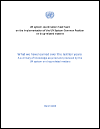
Resource | Publications,
Drug markets are evolving at unprecedented speed. The range of substances and combinations available to users has never been wider, and the amounts produced have never been greater. Cultivation and manufacturing of heroin and cocaine have reached record highs, synthetic drugs continue to expand, and the market for new psychoactive substances (NPS) remains widely diversified with a growing interplay with traditional drug markets. The non-medical use of regulated prescription drugs (either diverted from licit channels or illicitly manufactured) is becoming a major threat: in addition to the ongoing opioid epidemic in North America, there are signs of an opioid epidemic due to the non-medical use of tramadol in North and sub Saharan Africa, as well as in the Middle East. Drug-related deaths are on the rise. At the same time, access to controlled drugs for medical purposes remains a dramatic problem in most lowand middle-income countries.
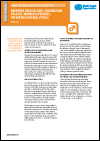
Resource | Publications,
The WHO had received notification of 32 cases of urethral fistula following male circumcision (MC) procedures performed in voluntary medical male circumcision (VMMC) between 2014 and 2018. While such adverse events are rare, this technical brief provides information to improve practice. This brief is based on the information from those events. It addresses the potential practices that could lead to a fistula, and measures to reduce these complications through improved understanding by practitioners.
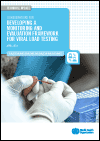
Resource | Guidelines,
The WHO consolidated guidelines on the use of antiretroviral drugs for treating and preventing HIV infection recommend viral load as the preferred monitoring approach to detect and confirm the failure of antiretroviral therapy. As countries invest in scaling up of routine viral load testing, measuring the impact of and progress towards achieving the UNAIDS target that 90% of people receiving antiretroviral therapy have suppressed viral loads by 2020 (as part of the 90 –90 –90 targets) is critical.
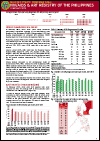
Resource | Fact Sheets,
In February 2019, there were 1,013 newly confirmed HIV-positive individuals reported to the HIV/AIDS & ART Registry of the Philippines (HARP). Fifteen percent (153) had clinical manifestations of advanced HIV infection (WHO clinical stage 3 or 4) at the time of diagnosis.
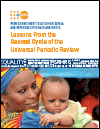
Resource | Publications,
The report assesses the successes, challenges and opportunities that the second cycle of the Universal Periodic Review (UPR) has offered for advancing and strengthening accountability on sexual and reproductive health and rights. It looks at the extent to which recommendations from the second cycle (2012–16) of the UPR have addressed sexual and reproductive health and rights (SRHR), and what issues within this field have received the most attention and which the least. It also looks at the type of recommendations that have been made in this area, and how Member States, UN Agencies and civil society actors have reported on SRHR issues, as well as differences across geographical regions. The report also assesses the extent to which SRHR recommendations from the first cycle have been implemented.
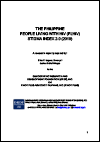
Resource | Publications,
The study utilized the People Living with HIV Stigma Index, a tool created by the Global Network of People Living with HIV (GNP+), International Community of Women Living with HIV (ICW), International Planned Parenthood Federation (IPFF) and Joint United Nations Programme on HIV (UNAIDs), which aims to comprehensively assess and compare the experiences of PLHIVs from across all nations affected by the spread of the disease. The topics covered by this measuring tool include: experience of stigma and discrimination from other people; access to work, health and educational services, internal stigma; knowledge on rights, laws and policies pertaining to HIV; effecting change, testing and diagnosis, disclosure and confidentiality, access to treatment and having children (Quinto et al. 2010).
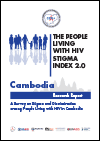
Resource | Publications,
Cambodia was one of the fastest growing HIV epidemics in Asia in the mid-1990s; however, the country has been successful in reducing its HIV prevalence and incidence over the last decade. Despite this success, Cambodia still needs additional efforts to address disparities at the subnational level, special needs among key populations, and general stigma and attitudes associated with HIV/AIDS. HIV-related discrimination is not only a human rights violation, but it also has an impact on people’s ability to access HIV testing, care, and treatment. The United Nations’ 2016 High-Level Meeting on Ending AIDS included “elimination of HIV-related discrimination” as one of three critical targets to achieve by 2020, along with reducing the number of new HIV infections and people dying from AIDS-related causes to under half a million.
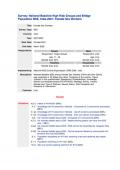
Resource | Data Sheets,
National Baseline BSS among Female Sex Workers (FSW) and their Clients was conducted in 32 States and Union Territories of the country. Topics included in the questionnaire: Background Characteristics, Knowledge, Opinion and Attitude towards STI/HIV/AIDS, Marriage, Family, Income, Number and Type of Partners, Sexual History, Risk Perception and Exposure to Intervention.
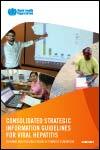
Resource | Guidelines,
The Consolidated strategic information guidelines for viral hepatitis summarize and simplify the overall approach proposed by WHO to collect, analyse, disseminate and use strategic information on viral hepatitis at local, subnational, national and international levels.
The document describes the use of strategic information at various stages of the response in the context of strengthening broader health information systems. Strategic information can be defined as data collected at all service delivery and administrative levels to inform policy and programme decisions.

Resource | Fact Sheets,
Trans people in all parts of the world are at heightened risk of violence, harassment and discrimination. Human rights violations range from bullying and verbal abuse, to denial of healthcare, education, work and housing, to criminalization, arbitrary arrest and detention, violence, assault, torture, rape and murder. Exposure to these and related abuses may be further exacerbated by other factors, such as age, ethnicity, occupation, socio-economic class and disability.





